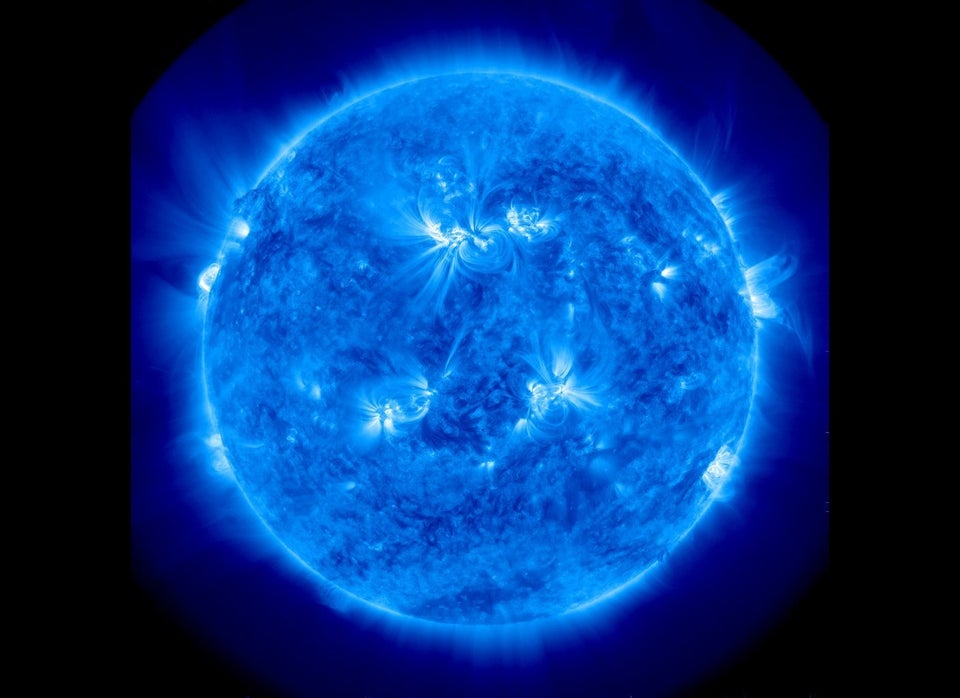The newest member of the exclusive space exploration club: A rubber chicken.
During last month's solar storm -- the most intense radiation storm since 2004 -- a group of California students launched a rubber chicken into space, all in the name of science.
Students at Bishop Union High School in California worked with NASA scientists to launch the chicken, dubbed "Camilla," to 120,000 ft. into space to study the effects of solar radiation on life and promote space weather discussion. Camilla is also the mascot of NASA's Solar Dynamics Observatory, and has her own Twitter and Facebook.
Watch Camilla's flight above.
The students are members of Bishop Union High's "Earth to Sky" group. Team member Rachel Molina, 17 years old, called Camilla's launch a "reconnaissance flight."
"Later this year, we plan to launch a species of microbes to find out if they can live at the edge of space," Molina told NASA Science News. From NASA:
During the two and a half hour flight, Camilla spent approximately 90 minutes in the stratosphere where temperatures (-40 to -60 C) and air pressures (1% sea level) are akin to those on the planet Mars. The balloon popped, as planned, at an altitude of about 40 km and Camilla parachuted safely back to Earth. The entire payload was recovered intact from a landing site in the Inyo Mountains.
The payload, a modified department store lunchbox, carried four cameras, a cryogenic thermometer, and two GPS trackers. Seven insects and two dozen sunflower seeds also rode along to test their response to near-space travel. The seeds were a variety known to gardeners as "Sunspot" (Helianthus annuus).
One week later, on March 10th, the storm was underway, and the students repeated the experiment.
A group of fifth grade students assisting the Bishop teens with the project are now planting those sunflower seeds to see if the radiated seeds produce flowers different from those that have not been exposed. Camilla's radiation badges have also been sent to a lab for analysis.
A focus on science and math education comes as the U.S. is becoming increasingly concerned over learning among the country's youth in science, technology, engineering and math (STEM). International testing has shown that American students fall behind foreign counterparts in math and science performance, and a 2009 study showed that U.S. students ranked 25th among 34 countries in those areas -- behind nations like China, Singapore, South Korea, Hong Kong and Finland.
President Barack Obama has made a call for improving STEM education over the next decade through several partnerships and initiatives, and the U.S. Navy announced last June a plan to invest more than $100 million in science and technology education by 2015. Its aging workforce seeks to bolster a robust generation to replace the 50 percent of its many science and engineering-based workers who will be eligible for retirement by 2020.
A report by the Statistical Research Center at the American Institute of Physics released last July rankings of how states' primary education systems are preparing students for careers in science and engineering. Massachusetts, Minnesota and New Jersey topped that list.
Check out more views of the solar flare:
